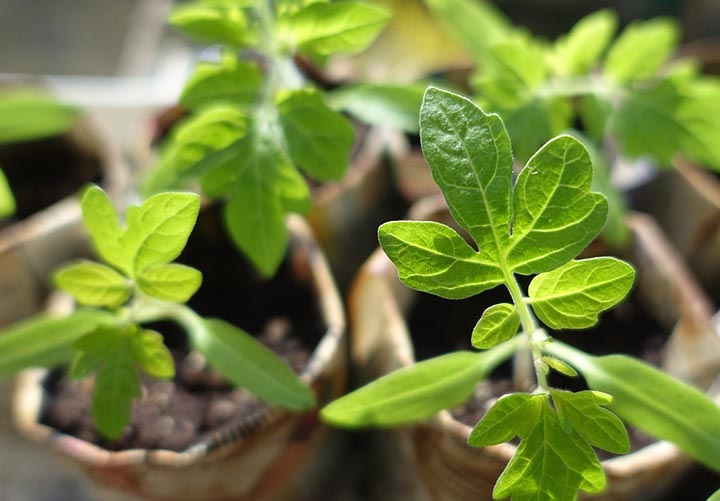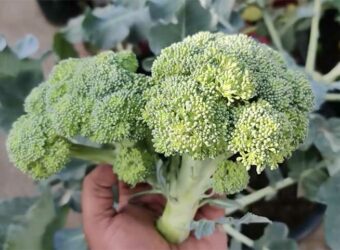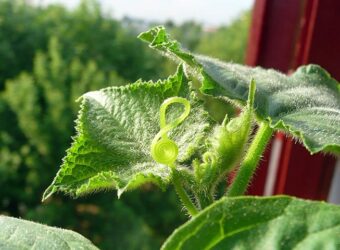There are hundreds of fertilizers for sale. This guide will tell you what 3-1-2 fertilizer is used for and how to buy the best 3-1-2 fertilizer.
What Is 3-1-2 Fertilizer?
A 3-1-2 has three percent nitrogen, one percent phosphorus, and two percent potassium. You can buy 3-1-2 fertilizer, but you can also buy fertilizer with a 3-1-2 ratio. The balance of a 3-1-2 fertilizer can include proprietary mixes of other nutrients, microbes, and other substances designed to make the fertilizer work better. The rest of the fertilizer consists of inert ingredients designed to make the fertilizer easier to spread.
The numbers on the front of the fertilizer bag are explained in more detail in this article.
What Is 3-1-2 Fertilizer Used For?
A 3-1-2 fertilizer is used for non-flowering trees, shrubs, other indoor plants, and lawns. It can also be used on seedlings.
Why Use 3-1-2?
Use a 3-1-2 fertilizer when you want some growth on the plant but not huge amounts. The phosphorus is enough to help the plant develop good roots, while the potassium helps with overall plant vigor. A 3-1-2 fertilizer is very mild, so you can use it on seedlings and houseplants without burning them. There are several commercial fertilizers for fiddle leaf figs and other ficus trees.
Types of Fertilizer
You can find 3-1-2 fertilizer in the following forms.
Liquid Fertilizer
Liquid fertilizers come ready to use or as concentrate. Concentrates are more expensive upfront but are cheaper per use. Both are either poured on the ground around the plant or sprayed on the leaves, depending on the type of fertilizer you purchase. Liquid fertilizers are absorbed immediately by the roots and last seven to fourteen days. They are convenient for potted plants and small areas but can be difficult to use over a large area.
Water Soluble Fertilizer
Water-soluble fertilizers are solid fertilizers that dissolve completely in water. They are mixed with water and applied just like a liquid fertilizer.
Granular Fertilizer
Granular fertilizer usually looks like pellets or little rocks. By itself, most granular fertilizers release their nutrients right away. However, some fertilizer is coated to release the nutrients slowly, as the coating erodes. Many granular fertilizers are a mixture of both. Nutrients last about one to two weeks for immediate-release fertilizers. For lawns, 3-1-2 granular fertilizers are spread with a spreader you push or one you hold in your hand. For potted plants, they are spread just inside the outer rim of the pot on the soil. In most cases, granular fertilizers need to be watered in within twenty-four hours to make the nutrient available to the plants.
Slow-Release Fertilizer
As I mentioned, slow-release fertilizer has a coating on it that gradually erodes, releasing nutrients in a trickle instead of a flood. In many cases, I recommend a fertilizer that is at least half slow-release so the plants will have the nutrients they need over a long time. Some slow-release fertilizer lasts six months, but it is more commonly effective for around three months. Slow-release fertilizer starts working after a week to two weeks. It is more expensive than regular fertilizer, but the convenience is worth it.
Organic Versus Synthetic Fertilizer
Organic fertilizer is derived from things found in nature. Not all natural things are allowed in organic fertilizer. The fertilizer must be certified as organic by an organization. In the United States, that is usually the USDA. Organic fertilizers feed soil microbes, which break down the nutrients into forms plants can use.
You will often see the phrase “all-natural” on fertilizers. These fertilizers can have almost anything in them because the phrase “all-natural” is not regulated. Look for organic instead.
Synthetic fertilizers are made with at least one ingredient that is from the lab. They feed the plants directly but do not nourish the microbes in the soil. Most synthetic fertilizer is made from petroleum products. Synthetic products are more likely to burn plants because the amount of nitrogen, phosphorus, and potassium can be so much higher.
When and How Do I Apply 3-1-2 Fertilizer?
The amount of 3-1-2 fertilizer you apply and when you use it varies depending on what you are growing. While you should always read and follow the instructions on the label, here are some ideas of what to expect.
Houseplants
A 3-1-2 fertilizer is ideal for non-flowering houseplants and indoor trees. I would use one to two teaspoons of concentrated fertilizer in one gallon of water. Mix well and drench the soil around the plant with the liquid. Do not get the fertilizer on the plant as it can burn it. Use this solution instead of water once every two weeks.
Annual Flowers
I would not use a 3-1-2 on annual flowers. They need more phosphorus to trigger their blooms, so I would use a 5-10-10 on them.
Existing Ornamental Plants
Existing ornamental plants will not do as well with a 3-1-2 fertilizer as with a 10-10-10 fertilizer. I use one pound of 10-10-10 per 100 square feet in spring when growth starts and again in mid-summer.
Bulbs and Tubers
I would use a 10-10-10 fertilizer instead of a 3-1-2 fertilizer for bulbs and tubers. I would broadcast one pound of 10-10-10 per 100 square feet on the ground before planting my bulbs and tubers. When these plants start to grow, I would spread one pound of 10-10-10 per 100 square feet and two pounds of bonemeal per 100 square feet.
Vegetable Gardens
I think 3-1-2 fertilizer is a good starter fertilizer for vegetables and seedlings of all kinds. For my seedlings, I start watering with a half-strength 3-1-2 fertilizer once they have their first two true leaves. I do this once a week. For plants I am transplanting in the garden, I scatter one pound of 10-10-10 per 100 square feet. I wait two weeks and start using a mixture of one tablespoon of 3-1-2 concentrate per gallon of water. I would use this fertilizer mix every two weeks on tomatoes, cantaloupes, melons, and cucumbers until they start to bloom. At that point, I would switch to 5-10-10. Too much nitrogen at this stage will grow all foliage and no fruit.
Trees
A 3-1-2 ratio fertilizer is often used for fig trees grown indoors. I mix one to two teaspoons of concentrate per gallon of water and use it every two weeks.
Other trees do better with 10-10-10 fertilizer. My article on 10-10-10 fertilizer goes in-depth on how much to use for the many different types of trees.
Lawns
A 3-1-2 is good for lawns. A 15-5-10 fertilizer provides a quick green-up and gives the lawn the nutrients it needs to grow. Use four pounds of fertilizer per 1,000 square feet.
What Is the Best 3-1-2 Fertilizer?
Most of the fertilizer products I can find for 3-1-2 are meant for houseplants. I found some 3-1-2 ratio products for lawns. Here are my picks for the best 3-1-2 fertilizers.
1. Professional Liquid Indoor Plant Fertilizer – Best 3-1-2 Liquid Fertilizer

My pick for the best liquid 3-1-2 fertilizer is Professional Liquid Indoor Plant Fertilizer. This fertilizer is specially designed to be easily absorbed by houseplants. You can use it on almost any indoor plant, with the exception of cacti and succulents. The fertilizer comes in a sturdy eight-ounce bottle that will keep it fresh for a long time, so none goes to waste. In addition, Professional Liquid Indoor Plant Fertilizer is guaranteed to make your plants grow well or get your money back. This fertilizer is made in the USA. It is not organic.
Professional Liquid Indoor Plant Fertilizer is made by Leaves and Soul. Leaves and Soul was founded to form a community of like-minded gardeners and to provide them with the soil, pots, and fertilizers they need to bring the outdoors indoors.
To use Professional Liquid Indoor Plant Fertilizer, mix one to two teaspoons of fertilizer with eight cups of water. Use to water the plant with every other watering.
I chose this fertilizer because it is a good general-purpose fertilizer for indoor plants. I also use it on seedlings because it is a mild product. I prefer liquid fertilizers for potted plants because they are easier to use than granular products. Professional Liquid Indoor Plant Fertilizer is not very expensive, and a bottle lasts a long time. If you have a fiddle leaf fig or other ficus plant, this fertilizer will make them happy. This fertilizer is not pet or child safe, so keep it out of reach.
Pros:
- Easy to use
- Sturdy container
- Inexpensive
Cons:
- Not organic
- Won’t feed cacti and succulents
2. Fiddle Leaf Fig Tree Plant Food by Plantco – Best 3-1-2 Granular Fertilizer

Fiddle Leaf Fig Tree Plant Food by Plantco is my pick for the best granular 3-1-2 ratio fertilizer. The NPK ratio is 15-5-10, and it also includes calcium and sulfur. It also has six percent humic acid from Leonardite. Humic acid is a soil conditioner that makes the potting soil better. This slow-release fertilizer only has to be used once every three to six months. This fertilizer will not burn your plant. It is not organic. Keep out of the reach of pets and children.
Plantco is owned by Agrica. Agrica provides non-GMO, open-pollinated seeds, and fertilizers to grow them with.
Sprinkle ¼ teaspoon of Fiddle Leaf Fig Tree Plant Food by Plantco on the soil for every one inch in pot diameter. Mix the fertilizer in the top inch of the soil. Water the plant well. Repeat in 3-6 months.
I think Fiddle Leaf Fig Tree Plant Food by Plantco is a good product for houseplants. I prefer liquid fertilizers to granular fertilizers. However, this fertilizer lasts up to six months, whereas liquids last about two weeks. This fertilizer is much more convenient because it lasts so long. The price is reasonable as well. One 8 oz. bag lasts a long time and is resealable, so the fertilizer stays fresh.
Pros:
- Long-lasting
- Inexpensive
Cons:
- Package size not practical for a lawn
3. Hi-Yield (32020) New Process Premium Lawn Fertilizer – Best Overall

Hi-Yield 32020 New Process Premium Lawn Fertilizer 15-5-10 is my pick for the best granular 3-1-2 ratio fertilizer. The NPK ratio is 15-5-10, and the fertilizer also includes sulfur and iron. The iron leads to a dark green lawn without overloading the grass with nitrogen. The sulfur is used in amino acids, which are necessary to construct new plant cells. This fertilizer can be used with all grass types. It is not organic.
Hi Yield is owned by VPG, also known as the ferti-lome people. Established in 1968, VPG serves independent garden merchants. Hi-Yield was developed in 1976 to give these dealers products to compete with big box stores.
Hi-Yield 32020 New Process Premium Lawn Fertilizer 15-5-10 20 lbs. Is applied to the lawn with either a push spreader or a hand-cranked spreader. The package has a table of spreader settings on it. Set your spreader to spread four pounds of fertilizer per 1,000 square feet. Walk back and forth on your lawn going North to South, then walk back and forth going East to West. This prevents any areas from being missed. Water the lawn deeply after applying the fertilizer.
Hi-Yield is a reputable company that makes good products. I consider Hi-Yield 32020 New Process Premium Lawn Fertilizer 15-5-10 20 lbs. a moderately priced fertilizer. One bag covers up to 5,000 square feet, about twice the average lawn. Be careful to keep this fertilizer off of sidewalks and driveways because the iron in it can stain. It is important to follow the label directions because this fertilizer will burn your lawn if you put too much down.
Pros:
- Good bargain
Cons:
- Can burn lawn
- Can stain concrete
Final Verdict
In conclusion, 3-1-2 fertilizer is used primarily for houseplants. Fertilizers with a 3-1-2 ratio, like 15-5-10, are used for lawns. My pick for the best liquid 3-1-2 fertilizer is Professional Liquid Indoor Plant Fertilizer. It is specially formulated for houseplants. My pick for the best granular 3-1-2 ratio fertilizer is Fiddle Leaf Fig Tree Plant Food by Plantco. You only have to use it every three to six months, so it is very convenient. My pick for the overall best 3-1-2 ratio fertilizer is Hi-Yield 32020 New Process Premium Lawn Fertilizer 15-5-10 20 lbs. This fertilizer is reasonably priced and will treat an average year twice.






